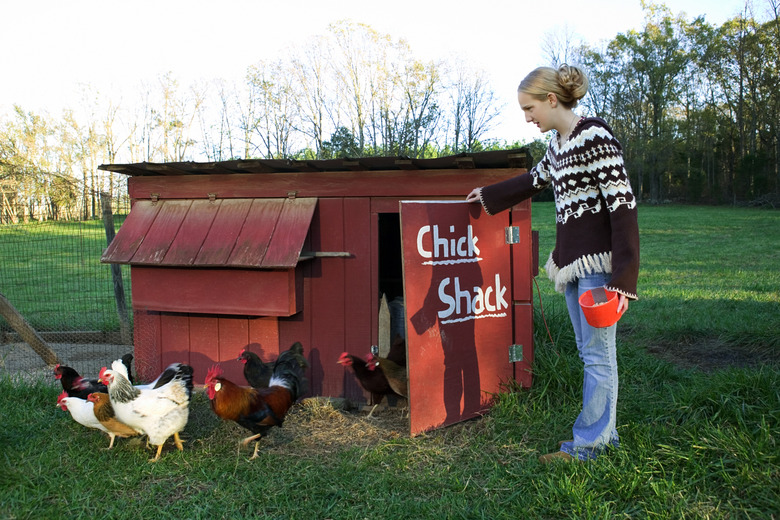Easy Chicken Coop Plans
With jobs still scarce and the economy limping along, it's only natural to ponder ways to decrease expenses, such as food, where you can and raising chickens is a partial solution. Poultry is a great source of eggs and meat, plus you know exactly what they've been fed, unlike the hormone-engorged, possibly chemical-laden industrial feeds commercial birds are raised on. Perhaps you just like chickens. Your first step in planning and building a coop is to understand your basic design options.
Design
Design
The type of chicken coop you choose to build is based on personal preferences and needs. Some coops are made of solid wood with windows and doors. These sturdy structures can be used to house the chickens at all times or only at night while they roam in an attached wire pen during the day. The other basic option is a lightweight wood and wire structure with no bottom that can be moved around the yard, bringing your birds' fresh grass and bugs with every re-location. Remember, anything goes. Choose from whatever material you have available or go crazy at the hardware store.
Sturdy Coop
Sturdy Coop
Should you decide to go with sturdier design, you are basically building a wooden shed with nesting boxes and roosts inside for the chickens. Left to their own devices, chickens will fly up into trees at night. Having a wooden coop will make them feel safe, content, and hopefully make them better egg producers. For the coop itself, frame it out with 2-by-4s. Cover the walls with plywood, tongue and groove boards, or whatever you prefer. For the ceiling, add more 2-by-4s for beams, then lay down plywood and cover with either shingles or tin. Plywood can also be used for the floor. Add doors and windows to suit. You can also build a chicken run (lightweight wire cage that attaches to the wooden coop). Put the whole thing on skids and it should be easy to drag around the yard with a riding lawn mower or small yard tractor.
Free Range
Free Range
Some people wish to approximate free range conditions for their chickens and prefer to avoid the closed-up, tight atmosphere described in the preceding section. For these people, building a coop is a simple matter of constructing a lightweight frame from 1-by-4s or 2-by-4s, covering the sides with chicken wire, adding a tin roof that can be removed during the day, and perhaps covering one side with a tarp to face toward the north wind during the winter. A pen like this can easily be moved by hand and is about as close as you can get to having your chickens roam freely, while not worrying about losing them to predators or faulty short-term memory when they forget the way home.
Cite This Article
MLA
Dowell, Derek. "Easy Chicken Coop Plans" sciencing.com, https://www.sciencing.com/easy-chicken-coop-plans-5772276/. 24 April 2017.
APA
Dowell, Derek. (2017, April 24). Easy Chicken Coop Plans. sciencing.com. Retrieved from https://www.sciencing.com/easy-chicken-coop-plans-5772276/
Chicago
Dowell, Derek. Easy Chicken Coop Plans last modified March 24, 2022. https://www.sciencing.com/easy-chicken-coop-plans-5772276/
